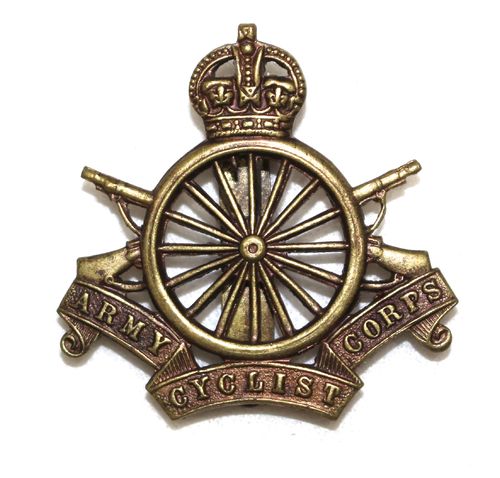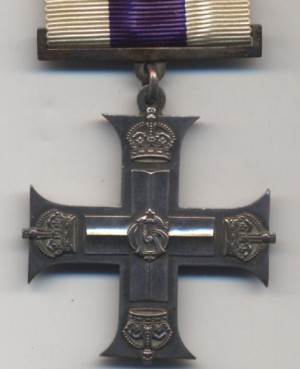Personal Details
Born: In 1881
Family: He married Katherine M Walker in 1921 in Darlington, Durham and together they had two children – Margaret R and Patricia E.
Residence: The 1919 Absent Voters’ Register records his address as Deermoss House, Whitchurch; no other connection with Whitchurch can be found. His address is recorded on his medal index card as Rydal, West Crescent, Darlington; he was living at 4 Rydal Crescent Darlington in 1939.
Employment: Not known
Died: In 1953 in Darlington.
Military Details
Regiment: Army Cyclist Corps (previously Royal Army Medical Corps)
Rank: Private rising to Second Lieutenant
Service Number: 60405 (in RAMC)
Date of Enlistment: Prior to 23 December 1915
Date of Discharge: Not known
Reason for Discharge: Not known
Other Information: He was awarded his MC on 3 October 1919 for an act of gallantry which took place at the Ferme de la Salmange, Elesmes, north east of Maubeuge on 9 November 1918. He served in Egypt.
Alfred was awarded the Military Cross and Campaign Medals (1915 Star, British War Medal, and Victory Medal).
The Military Cross is the third-level military decoration awarded to officers and (since 1993) other ranks of the British Armed Forces, and used to be awarded to officers of other Commonwealth countries.
The Military Cross is granted in recognition of "an act or acts of exemplary gallantry during active operations against the enemy on land to all members, of any rank in Our Armed Forces". In 1979, the Queen approved a proposal that a number of awards, including the Military Cross, could be awarded posthumously.
Click on the tag below to see details of each recipient.

The 1914 Star (also known as 'Pip') was authorised under Special Army Order no. 350 in November 1917 and by an Admiralty Fleet Order in 1918, for award to officers and men of the British and Indian Expeditionary Forces who served in France or Belgium between 5 August and midnight of 22–23 November 1914. The former date is the day after Britain's declaration of war against the Central Powers, and the closing date marks the end of the First Battle of Ypres.
The 1914–15 Star (also known as 'Pip') was instituted in December 1918 and was awarded to officers and men of British and Imperial forces who served against the Central European Powers in any theatre of the Great War between 5 August 1914 and 31 December 1915. The period of eligibility was prior to the introduction of the Military Service Act 1916, which instituted conscription in Britain.
The British War Medal (also known as 'Squeak') was a silver or bronze medal awarded to officers and men of the British and Imperial Forces who either entered a theatre of war or entered service overseas between 5th August 1914 and 11th November 1918 inclusive. This was later extended to services in Russia, Siberia and some other areas in 1919 and 1920. Approximately 6.5 million British War Medals were issued. Approximately 6.4 million of these were the silver versions of this medal. Around 110,000 of a bronze version were issued mainly to Chinese, Maltese and Indian Labour Corps. The front (obv or obverse) of the medal depicts the head of George V. The recipient's service number, rank, name and unit was impressed on the rim.
The Allied Victory Medal (also known as 'Wilfred') was issued by each of the allies. It was decided that each of the allies should each issue their own bronze victory medal with a similar design, similar equivalent wording and identical ribbon. The British medal was designed by W. McMillan. The front depicts a winged classical figure representing victory. Approximately 5.7 million victory medals were issued. Interestingly, eligibility for this medal was more restrictive and not everyone who received the British War Medal ('Squeak') also received the Victory Medal ('Wilfred'). However, in general, all recipients of 'Wilfred' also received 'Squeak' and all recipients of The 1914 Star or The 1914/1915 Star (also known as 'Pip') also received both 'Squeak' and 'Wilfred'. The recipient's service number, rank, name and unit was impressed on the rim.


